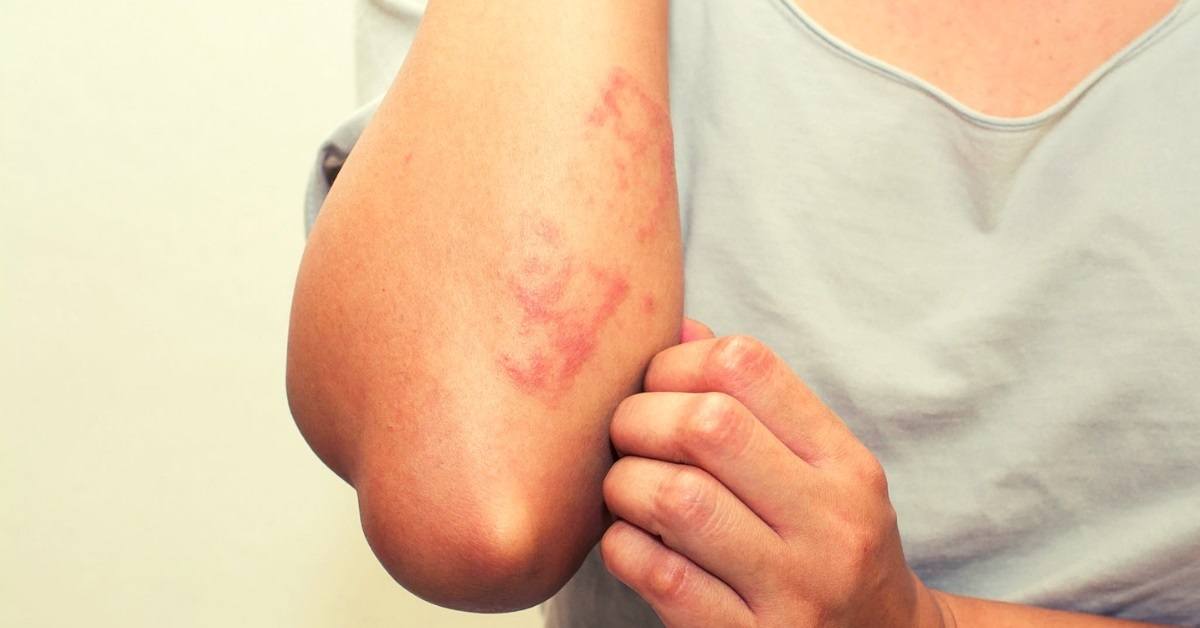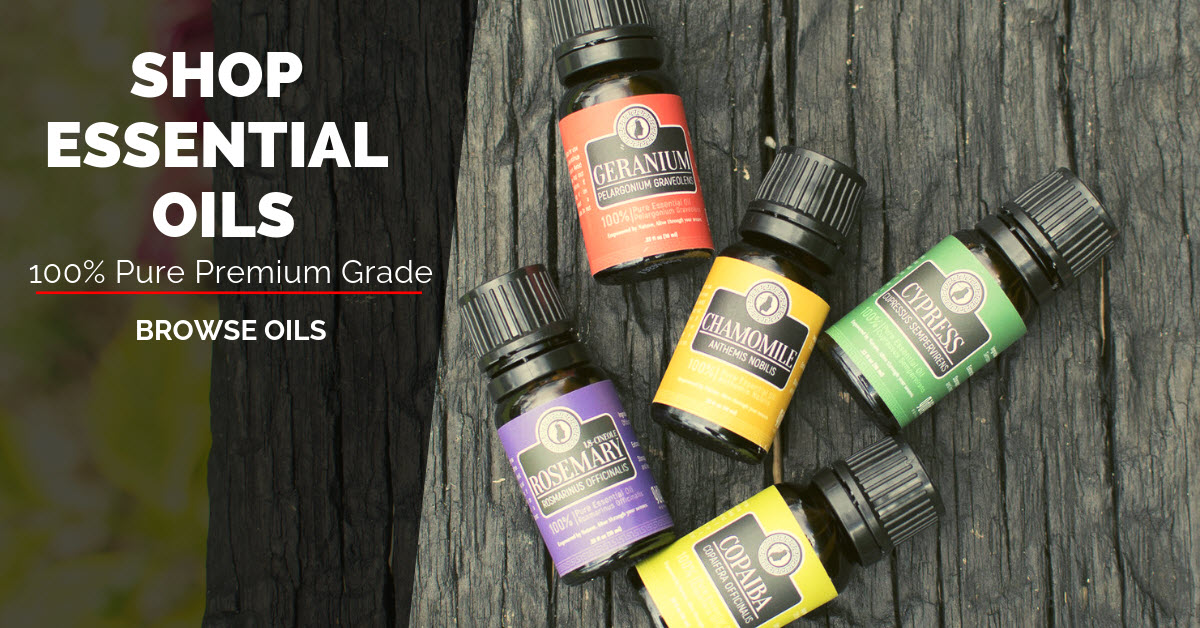The most common type of rash is contact dermatitis. This happens when the skin becomes inflamed, perhaps due to contact with cosmetics, chemicals, detergents, dyes, poison ivy, and others. They can appear on several parts of the body, including around the eyelids, eyebrows, scalp, face, hands, legs etc.
Some rashes are more serious than others. For example: you may need to seek medical care for rashes caused by genital herpes. Other types of rashes may be caused by shingles, diaper rash, eczema, seborrheic dermatitis, and others. Before you can administer proper care, it’s integral to find out what caused the rash.
Why Essential Oils Are Good For Rashes
Essential oils are good for rashes because of the impact they have on inflammation of the skin. Some rashes will fade on their own, but they cause great discomfort. Essential oils can be used to soothe irritable and inflamed skin. This may reduce the appearance of redness of the skin, discoloration, and even scales.
Essential oils differ in components. Some oils that soothe itchiness of the skin might not reduce inflammation. To supplement, some rashes might be caused by fungi. You’ll need to administer an essential oil with antifungal or antimycotic properties to treat the problem. Regardless, most rashes have common symptoms, and essential oils can address them.
7 Best Essential Oils For Rashes
1. Patchouli Essential Oil (Pogostemon cablin)
Patchouli might not wear the best fragrance, but this wonder oil is packed with skin benefits. In addition to rejuvenating cracked and chapped skin, patchouli can be used to tackle a nasty case of athlete’s foot. Athlete’s foot is a type of rash caused by the ringworm fungi that affects the feet.
As the components of patchouli produce an antifungal agent, it can be used against athlete’s foot.
Use patchouli as a foot rub to prevent the fungi from spreading to other areas of the body. Combine 4 drops of the oil with a tablespoon of St. John’s wort macerate and apply to the athlete’s foot rashes.
Best for: athlete’s foot
2. Valerian Essential Oil (Valeriana officinalis)
Stress has a tremendous impact on the body. Not only does it affect your emotions and cognition, but it impacts your physical being. If you’re someone with sensitive skin and habitually contract dermatitis, stress can aggravate the situation. Hence, control your stress levels and you may see fewer rashes.
Use valerian to regulate your emotions and deal better with stress encounters. To encourage your body to relax, allow the oil’s fragrance to scent your room. To do this, add 3 drops of the oil to your vaporizer, oil burner, or diffuser. Take slow inhales and allow tranquility to set in.
Best for: stress relief
3. Tea Tree Essential Oil (Melaleuca alternifolia)
Scalp seborrheic dermatitis is a type of rash affecting the scalp. We typically call this dandruff. This skin condition seems to be associated with pityrosporum yeast and inflammation of the skin. Because of its antifungal properties, tea tree may be used to treat this type of rash on the scalp.
Tea tree can be added to your shampoo for weekly washes. Use 20 drops of tea tree for every 100 ml of shampoo. Add the drops of oil to your shampoo depending on its content, and massage unto the scalp.
Best for: dandruff
4. Yarrow Essential Oil (Achillea millefolium)
Rashes, regardless of how they manifest on your skin, are itchy. They also have the tendency to become inflamed – swollen and painful – especially in clusters. The natural properties of yarrow effects an anti-inflammatory agent that can be used to reduce red, painful, and swollen rashes.
To start the relief process, combine 3 drops of yarrow with a tablespoon of St. John’s wart oil. Massage the oil on areas of the skin where rashes gather in clusters.
Best for: skin inflammation and itchiness
5. Common Marigold Absolute (Calendula officinalis)
Common marigold was used throughout tradition as a “comfort oil”. It’s reputable among skin afflictions, namely burns, insect bites, rashes, and eczema. Marigold is of particular interest because of the impact it may have on diaper rash. A comparative trial of marigold and aloe vera revealed that the volatile oil was more effective against diaper rash.
As babies are sensitive, marigold is the ideal oil to use. Add 2 drops of marigold to a teaspoon of sunflower oil and massage the area. You can use as a substitute for your base oil almond or olive. Not just any carrier oil will do because of a baby’s skin sensitivity.
Best for: diaper rash
6. Sandalwood Essential Oil (Santalum album)
Sandalwood is that woody extract with a subtle sweet aroma that men can use with confidence. The oil is reputable as a botanical treatment for diseases of the skin. Owing to its natural components, sandalwood works against skin inflammation, including cases of barber rash.
To use sandalwood as an aftershave rub, add 2 drops to a teaspoon of almond oil. Rub the oil vigorously between the palms to get it warm. Apply to the area immediately for a soothing effect.
Best for: barber rash
7. Carrot Seed Essential Oil (Daucus carota)
Rashes of all sizes and shapes make your skin look tired and old. Not only does carrot seed oil rejuvenate the skin, but its major compounds work against dermatitis. The pinene and geranyl compounds of the extract is primarily responsible for the oil’s effectiveness against skin inflammation. When used, carrot seed can soothe, revitalize, and nourish the skin. It may even provide protection against some fungal infections.
Add carrot seed to your daily skin regimen by adding 20 drops of oil to 100 ml of your skin cream or lotion base. An alternative is to add 2 drops of the oil to a tablespoon of your favorite base oil and apply to rash areas.
Best for: contact dermatitis
3 Best Essential Oils For Rashes Recipes
Stimulating Scalp Massage Blend For Dandruff
The essential oils used within this blend inhibit the growth of fungus and promote healthy scalp. Itchy, dry scalp is a nightmare. This tea tree blend, with its antifungal action, aims to get rid of rash of the scalp.
This should make at least 2 applications. You’ll need:
- 2 drops patchouli
- 3 drops tea tree
- 2 drops lavender
- 1 tablespoon coconut oil.
If your coconut oil is solid, use a bain-marie to melt. Combine the recommended essential oils with your coconut oil base in a clean glass container.
Use half of the contents of the glass to massage unto the scalp. This blend is most effective when you’re ready to snooze during the nights.
Use a towel to separate your hair from your pillow to prevent a mess while you sleep.
The oil should be left on overnight. Rinse it out once you get up in the morning. You should shampoo first.
Soothing Foot Rub Blend For Athlete’s Foot Rash
The essential oils within this blend are ideal for cases of athlete’s foot rash. While the oils’ antifungal properties work to prevent fungi growth and development, the oils encourage beautiful, healthy skin.
This athlete’s foot rash blend should make at least 30 ml. You’ll need:
- 5 drops patchouli
- 3 drops rosemary
- 3 drops tea tree.
- 2 tablespoons of neem oil
As a diluent, neem oil is a great option that works against skin fungi. Combine in a bowl all the ingredients. Transfer the contents of the bowl to a clean bottle, preferably one that’s dark. The opening should be sealed.
Your feet should be cleaned thoroughly before application. Pour a few drops of the blend into your palm and massage onto the affected foot (or feet). Wait until the oil is absorbed into the skin before dressing up your feet with socks or shoes.
Cooling Compress For Inflammation Of The Skin And Itchiness
Rashes are often inflamed, red with blisters, and itchy. This cooling compress blend incorporates mild and pain-relieving essential oils to help control inflammation and itchiness.
This only makes a single compress. Remake as needed. You’ll need:
- 5 drops yarrow
- 3 drops of lavender.
- 1 tablespoon of almond as your base oil.
Fill a bowl with cold water. You may also add ice to it. Combine the suggested essential oils with your base oil. Add the mixture to the water.
Add a washcloth to the bowl, allowing it to soak up its contents.
Remove the washcloth from the bowl and squeeze to get rid of most of the water.
Place the compress on the rash-infested area. Allow the compress to reach body temperature before removing.
Repeat the process for about 3 to 4 times.
To Summarize
- The most prevalent type of rash is called contact dermatitis. This may cause itchiness, redness, inflammation, and dry scales.
- Rashes are caused by various factors. Identifying the cause or type of rash makes it easier to find the appropriate essential oil therapy. Types of rashes include athlete’s foot, eczema, diaper rash, barber rash, shingles, herpes, and others.
- Essential oils such as patchouli, valerian, tea tree, yarrow, common marigold, sandalwood, and carrot seed oil may help with different symptoms of rashes. Not all rashes are made equally.
- Ideal essential oil blends for rashes include those that work against skin inflammation and fungi.
Read more:


